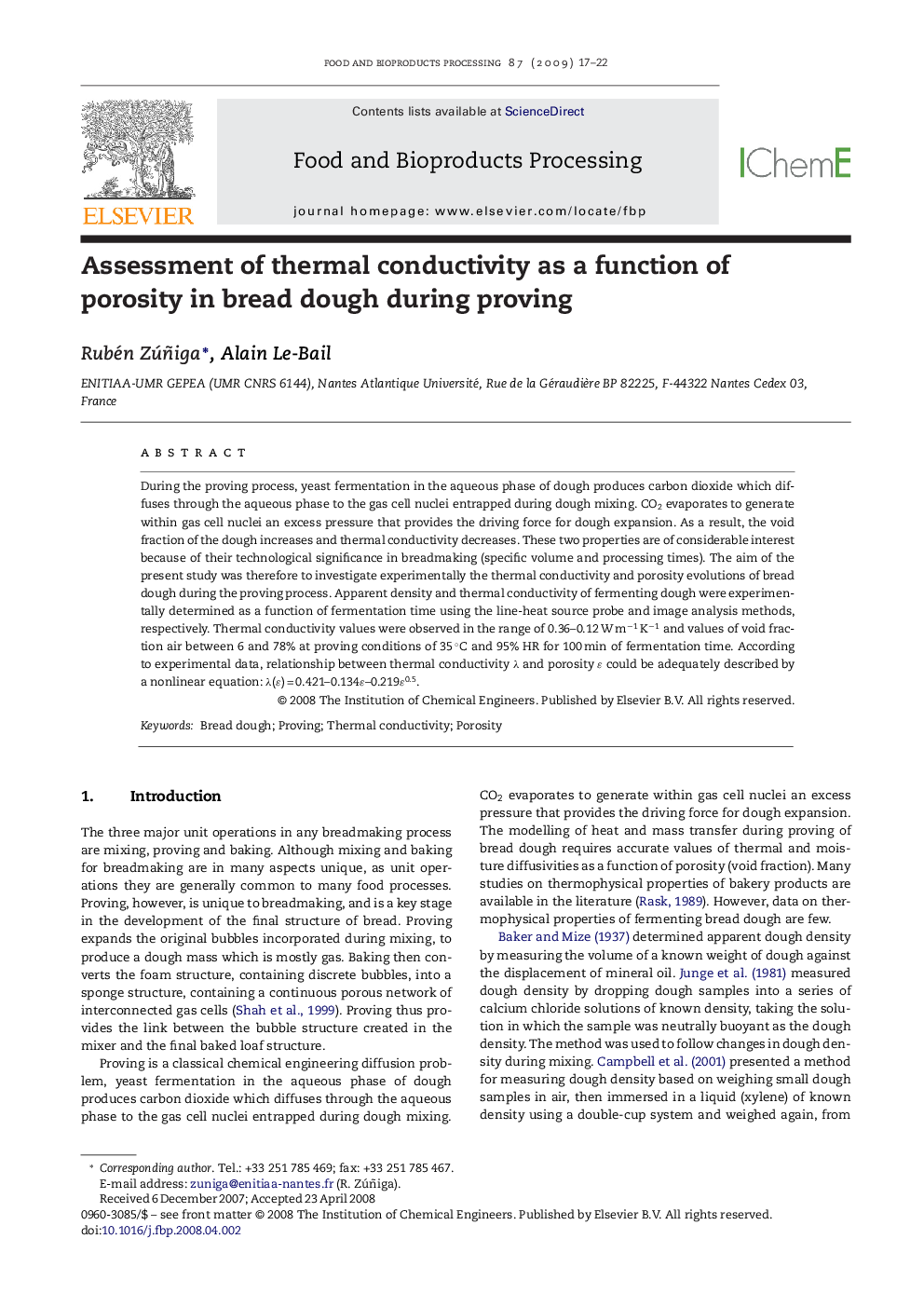| Article ID | Journal | Published Year | Pages | File Type |
|---|---|---|---|---|
| 19273 | Food and Bioproducts Processing | 2009 | 6 Pages |
During the proving process, yeast fermentation in the aqueous phase of dough produces carbon dioxide which diffuses through the aqueous phase to the gas cell nuclei entrapped during dough mixing. CO2 evaporates to generate within gas cell nuclei an excess pressure that provides the driving force for dough expansion. As a result, the void fraction of the dough increases and thermal conductivity decreases. These two properties are of considerable interest because of their technological significance in breadmaking (specific volume and processing times). The aim of the present study was therefore to investigate experimentally the thermal conductivity and porosity evolutions of bread dough during the proving process. Apparent density and thermal conductivity of fermenting dough were experimentally determined as a function of fermentation time using the line-heat source probe and image analysis methods, respectively. Thermal conductivity values were observed in the range of 0.36–0.12 W m−1 K−1 and values of void fraction air between 6 and 78% at proving conditions of 35 °C and 95% HR for 100 min of fermentation time. According to experimental data, relationship between thermal conductivity λ and porosity ɛ could be adequately described by a nonlinear equation: λ(ɛ) = 0.421–0.134ɛ–0.219ɛ0.5.
